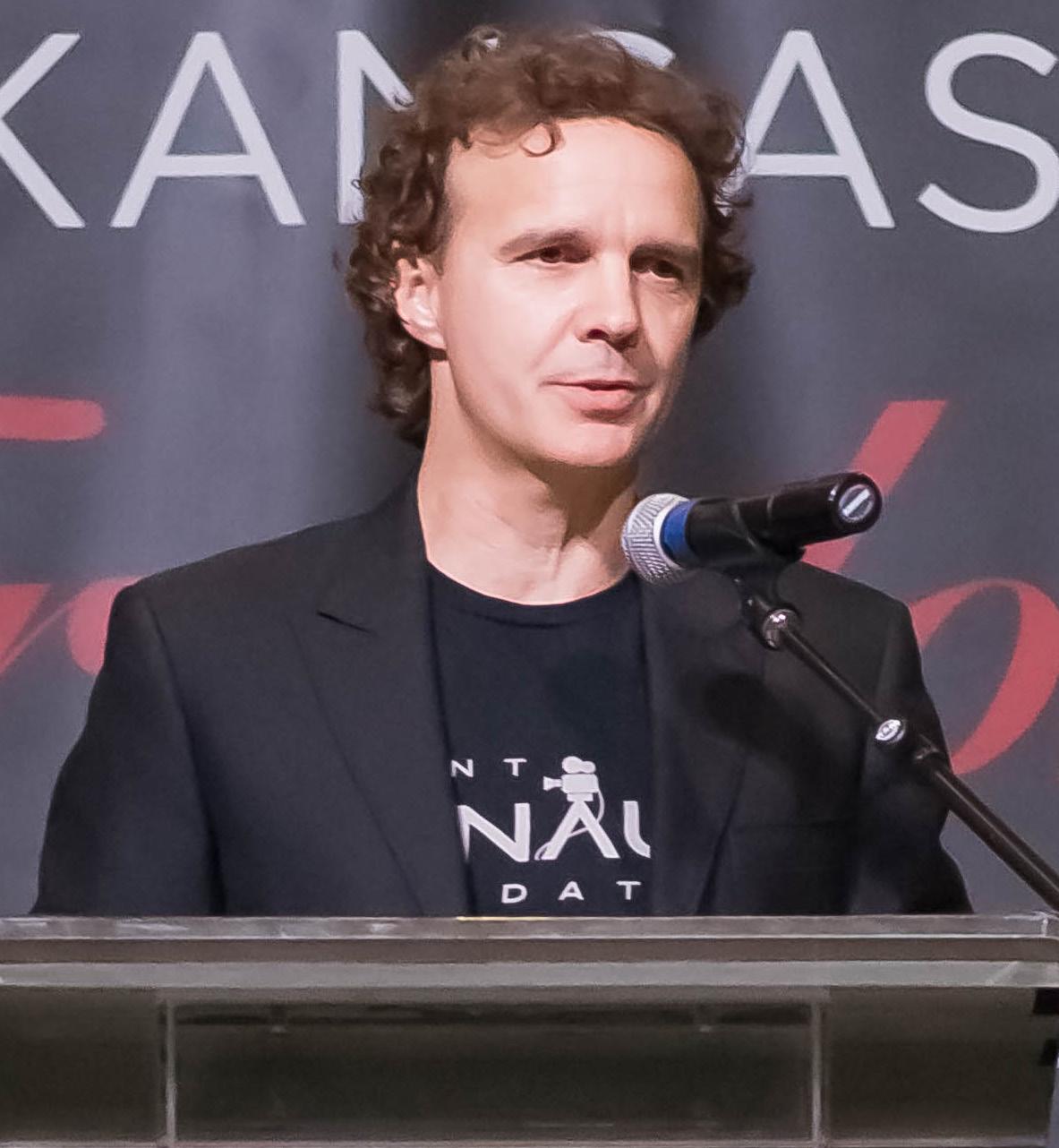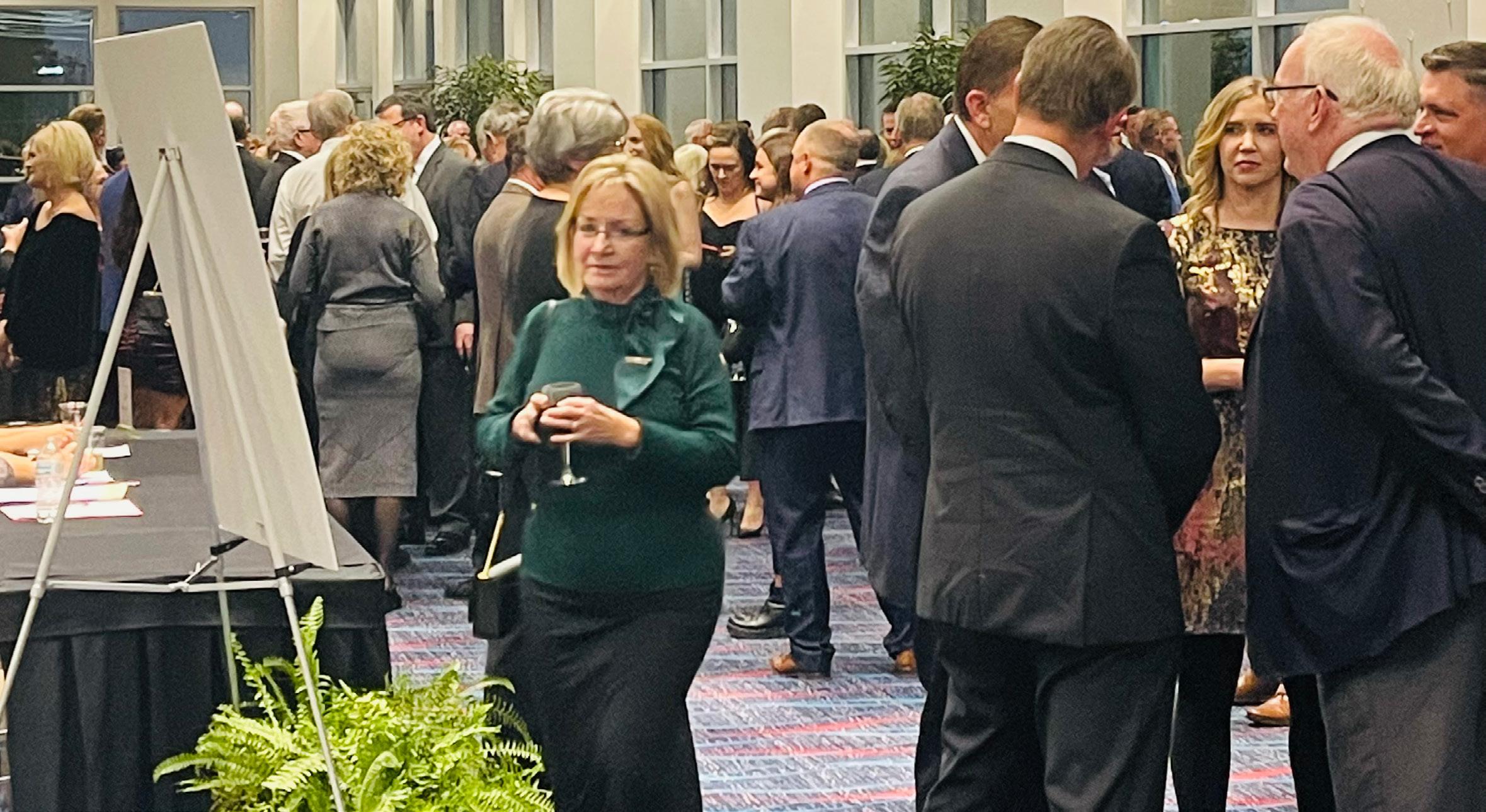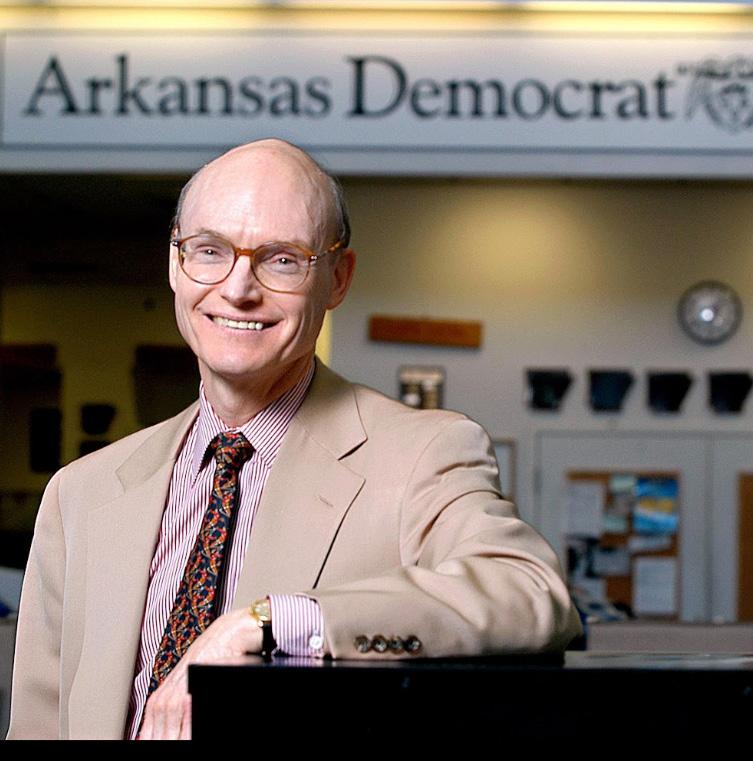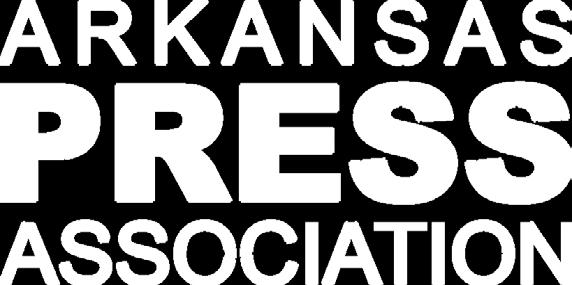


























Walter E. Hussman, Jr. announced his intent to retire as publisher of the Arkansas Democrat-Gazette at the Arkansas Press Freedom Gala this past Thursday.

Hussman, 75, received the Golden 50 Service Award. During his acceptance speech he said he would step down from his role as publisher by the end of the year.
“The time now is for the next generation,” Hussman said.
He did not say who the next publisher would be.
Hussman said he has long thought that no one should be in charge of anything after age 75, and that belief influenced his decision to step down, although he would continue to serve as chairman of the board of WEHCO Media, Inc., the family business.
“Arkansas has benefited greatly from Walter Hussman’s innovative thinking and unwavering commitment to good journalism and the Arkansas newspaper industry for more than five decades,” said APA Executive Director Ashley Kemp Wimberley. “His support has been invaluable to our association, and it would be impossible to overstate his accomplishments and the impression he has had on our industry.”
Next Tuesday is the deadline to take advantage of the ArkLaMiss conference group rate of $79 per night. Those interested in getting the discount should call the Ameristar Hotel and Casino directly at 601-638-1000 by November 1 and reference the group code S11MS22.
The circulation, marketing and audience development conference is being held Nov. 17-18 in Vicksburg, Mississippi. The annual conference is presented by the Arkansas Press Association and the Mississippi Press Association.
Bill Ostendorf of Creative Circle Media Solutions is the keynote presenter. Creative Circle is one of the industry’s leading consulting, training, design and software firms and provides a wide range of resources to help any size newspaper thrive.
The conference will also include the traditional Hot Ideas Exchange and a roundtable discussion of common issues and challenges at community newspapers.
Registration and conference info is at arklamissconference. com.

The Clarksville City Council voted 5-0 last week to table a pending property sale until details of the sale were advertised in The Graphic, the newspaper of record for Johnson County.
Mayor David Rieder presented two resolutions for the Council to consider regarding offers on the sale of city properties.
A legal notice advertising the property sales appeared in the neighboring Russellville (Pope County) newspaper, The Courier, on Aug. 10 and 17.


Alderman Eddie King said the property listings need to also be advertised locally in Clarksville and Johnson County. Rieder argued that his goal was to save money and reach a wider audience, however King made a motion to publish the sale in The Graphic for two weeks, which passed unanimously.







































at the APA headquarters in Little Rock.

R K A N S A S P R E S S A S S O C I A T I O N
For more than two hours The U.S. Supreme Court listened to oral arguments for Andy Warhol Foundation for the Visual Arts, Inc. v. Goldsmith on Oct. 12. - a case that could clarify the fair use doctrine. This is the first time the Supreme Court is considering a fair use defense applied to a photograph, according to a report in College Media Review.
Celebrity portrait photographer Lynn Goldsmith photographed recording artist Prince in December 1981, while she was on assignment for Newsweek magazine. At the time, Prince was a relatively unknown musician and the photographs were not published. Three years later, after Prince’s “Purple Rain” album made him a star, Vanity Fair magazine licensed one of Goldsmith’s photographs for $400 and commissioned artist Andy Warhol to create artwork for a feature in the magazine. Goldsmith’s photograph was to serve as “an artist reference for an illustration to be published in Vanity Fair.” Warhol’s artwork ran in Vanity Fair, credited to Warhol and to Goldsmith for the source photograph.
Warhol died in 1987. Goldsmith did not become aware of the use of her photograph as the reference source until after Prince died in 2016. The dispute then emerged when the Andy Warhol Foundation for the Visual Arts licensed Warhol’s “Prince Series” for use in a magazine commemorating Prince’s life. The artwork appeared on the cover of a special The Genius of Prince magazine in May 2016, with no image copyright
credit to Goldsmith. Goldsmith claimed this use, for which she did not receive any fee, denied her licensing opportunities for her photographs. She brought a copyright infringement case, which has been winding its way through the federal courts since 2017.
The question the Supreme Court is considering is whether the Warhol Foundation’s licensing to Conde Nast of Warhol’s Prince artwork was an infringement of Goldsmith’s original photograph, or whether Warhol’s artwork constitutes fair use.
According to First Amendment Attorney Carolyn Schurr Levin, a Supreme Court decision against the Warhol Foundation would signal a walk-back of transformative use/fair use concepts under federal copyright law.
If the Supreme Court upholds the federal appeals court ruling that Warhol’s use was infringing, according to Levin, journalists will need to do even more in-depth analysis on the creation and use of graphics, art, and photos based on underlying source materials.
According to observers of the oral arguments, the court seems split on the case, but not along typical lines.
Newly-appointed Justice Ketanji Brown Jackson was concerned the Warhol Foundation’s argument conflated a work’s message or meaning with its purpose, while Chief Justice John Roberts said “you don’t say, ‘Oh, here are two pictures
The Arkansas Newspaper Connection is a weekly newsletter published by APA connecting freelance and independent writers, editors, photographers and designers with Arkansas newspapers in need. The publication also lists available job openings and other opportunities at Arkansas newspapers and associate member organizations.
of Prince.’ You say, ‘that’s a picture of Prince, and this is a work of art sending a message about modern society.’”
Justice Amy Coney Barrett asked whether the question of fair use for the Prince series would differ if the work was hanging in a museum, rather than being reproduced in a magazine.
Justice Elena Kagan also wondered if Warhol’s fame and instantly identifiability makes it easier to ascribe a new message to his works. “[Museums] show Andy Warhol because he was a transformative artist who took a bunch of photographs and he made them mean something completely different,” she pointed out.
But Justice Sonia Sotomayor noted it was “hard to see” how the Warhol portrait didn’t compete with Goldsmith’s: “They both sell photographs to magazines.”
The decision may ultimately hinge on the fact the Warhol Foundation licensed the image for reproduction in Vanity Fair
“Campbell’s soup seems to be an easy case. The purpose of the use for Andy Warhol was not to sell tomato soup in a supermarket. It was to induce a reaction from a viewer in a museum or in other settings,” Justice Neil Gorsuch said. “The difficulty of this case is that this particular image is being used arguably, maybe, for the same purpose, to identify an individual in a magazine.”.
A decision from the court is expected sometime in the coming months.



A free, hour-long webinar on workplace integrity will be offered by the Power Shift Project on Monday, November 14 at noon CST.
Led by Jill Geisler, Freedom Forum Fellow in Women’s Leadership, the live webinar will provide practical insights for men who want to be allies to women, people of privilege who want to do more to fight inequity and powerful individuals who want to be better advocates for change.

Topics covered during the webinar include:

● How aspiring allies learn to become “trusted forces for good.”
● How power affects our perspectives.
● How to have courageous conversations with the right words at the right time.
● How to keep bias from finding its way into decision making.
● Why micro-aggressions aren’t really so “micro”, and how to stop them.

● How to address the burden of “invisible work” that can harm underrepresented
staff.
● Real-world situations in which newsroom allies made a difference for their colleagues — and created better journalism, too.
The Power Shift Project is a national industry-wide initiative to improve the quality and future of journalism by improving the diversity, equity and culture of news organizations. The Project’s goal is workplace integrity, defined as environments free of harassment, discrimination and incivility and filled with opportunity, especially for those who have traditionally been denied it.
The Project was launched in January 2018 with the Power Shift Summit, where more than 130 newsroom leaders, editors, reporters, educators and advocates convened at the Newseum in Washington, D.C., to discuss solutions to end sexual misconduct and promote opportunity for all.
The Gannett Foundation is a major sponsor of the project.



Jill Geisler
For more information or to register for webinar visit: https://us06web.zoom. us/webinar/register/WN_7mnLc5ZvR7EwjSQsS-Enw

Joanne is an ad manager with a commonsense approach to managing her team and their goals. She believes in communication – not micro-management, but real communication on how things are going.
“For years,” she told me, “I often found out at the eleventh hour that something wasn’t going as planned. A crucial email wasn’t sent in time, a proposal was held up by research delays, or an ad deadline wasn’t met. Now, those things can happen to even the best members of an ad team at the best of publications. But it puts everyone in an awkward position and threatens to damage our credibility.
“So, I started relying on a little saying that I heard a long time ago: ‘Say what you’re going to do. Then do it, or renegotiate.’ It has become a catchphrase around the office. Start out with a realistic commitment, by saying what you’re going to do, whether it’s to email certain information to an advertiser by the end of the week, submit a proposal by next Tuesday, or have an ad ready to run by this afternoon. Then do what you committed to do – on time. It sounds simple, but some salespeople
get so excited about a sale that they have a tendency to overpromise. That’s where they can get into trouble by thinking they can double their effort and get things done on schedule. The result is often a missed deadline or sloppy proofreading.
“That’s why renegotiating is so important,” Joanne said. “As soon as they know things aren’t going as promised, it’s best to go back to the other person and say something like, ‘I’m sorry the proposal I promised by next Tuesday has been delayed. I wanted to tell you as soon as I found out, because you have a right to know exactly what’s going on. Let’s talk about some alternatives. Could later next week possibly work for you? That will allow us to gather more complete demographic information and give you a better view of your target audience.’ Notice how the statement ends with a benefit to the other person.
“As a manager,” Joanne explained, “this approach helps me stay up to speed with what is happening with our advertising department. Plus, it shows the team that this kind of situation does not mean failure. It’s just a speed bump along the
way. This is much better than waiting until the last minute to tell me, their advertiser or their coworkers.”
There’s a big lesson in Joanne’s philosophy. Transparency is a key principle of business communication. The word itself indicates “seeing through,” such as a window allows us to see what’s on the other side. When we are transparent with other people, we eliminate the window shades of pride and embarrassment which tempt us to wait “one more day” before sharing what we fear could be interpreted as bad news.
While bad news is not happy news, this technique can help keep the lines of communication – and customer relations – open.
(c) Copyright 2022 by John Foust. All rights reserved.
John Foust has conducted training programs for thousands of newspaper advertising professionals. Many ad departments are using his training videos to save time and get quick results from in-house training. Email for information: john@johnfoust.com



 Nov. 17-18, 2022 • Vicksburg, MS
Nov. 17-18, 2022 • Vicksburg, MS
Thursday, Nov. 17, 2022
1:00 p.m. Welcome and introductions
1:15 p.m. Is print dead or dying? Presented by Bill Ostendorf, Creative Circle Media Solutions
Should you roll back publication frequency? We’ll offer a different perspective about how and why print can still thrive. There has long been an assumption out there that print is a dead end but the facts simply don’t bear that out. We’ll discuss why print is declining, how to reverse it and dispel some myths about print readership. You are part of the solution and also part of the problem. And you don’t want to be the reason print fails in your market!
2:45 p.m. Break
3:00 p.m. Content that will drive your readership. Presented by Bill Ostendorf What the pandemic taught us and how to create a more interesting and engaging newspaper in print and online. If we can create more stories readers want to read, we can increase engagement, which is the key to not only surviving but for thriving in today’s environment.
4:30 p.m. Break and check-in
5:30 p.m. Reception
Friday, Nov. 18, 2022

8:00 a.m. Continental breakfast
9:00 a.m. Ideas Exchange
Bring your best ideas for increasing readership and revenue, promotions, expense reductions, and making budget for a chance to win a share of cash prizes.
10:00 a.m. Break and check-out
10:30 a.m. Roundtable Discussion
A time to discuss common challenges and creative solutions with your peers.

Terrace, Jackson, MS 39206.
601-981-3676

November 17-18, 2022

$79
code: S11MS22
Vicksburg, MS
(601) 638-1000
Hotel cutoff: Nov. 1, 2022